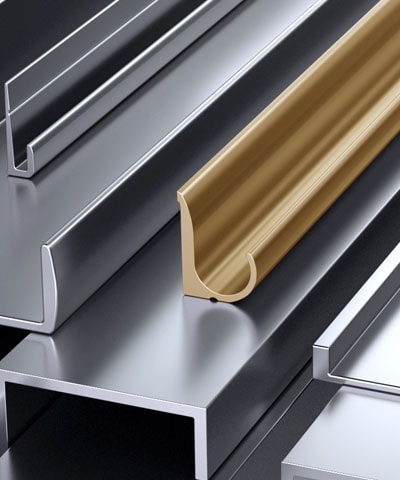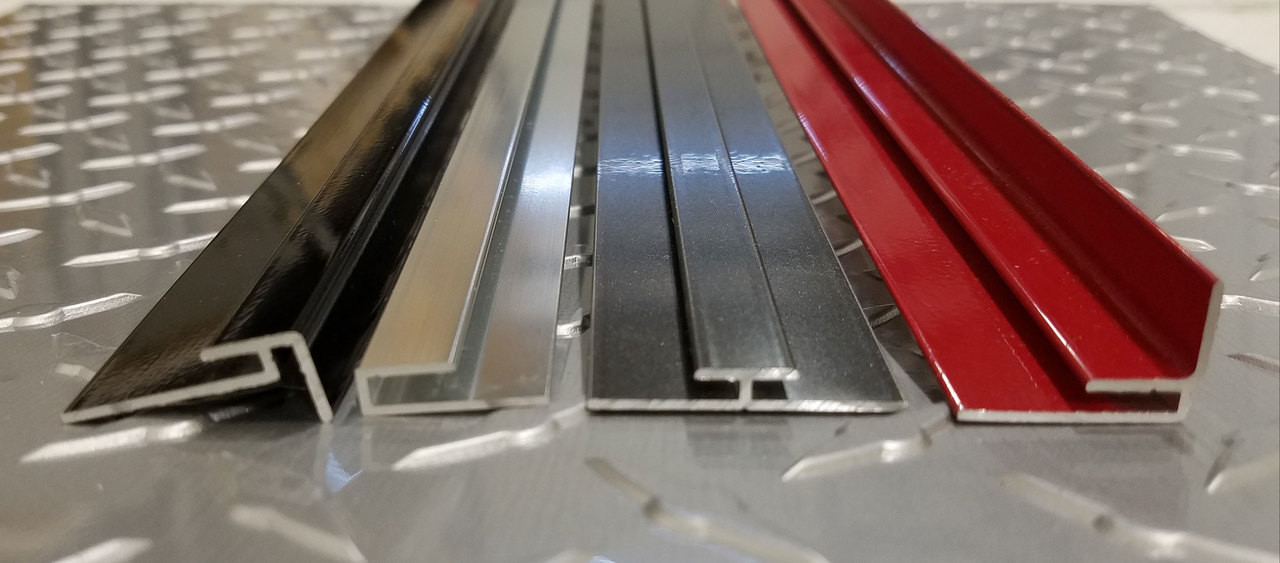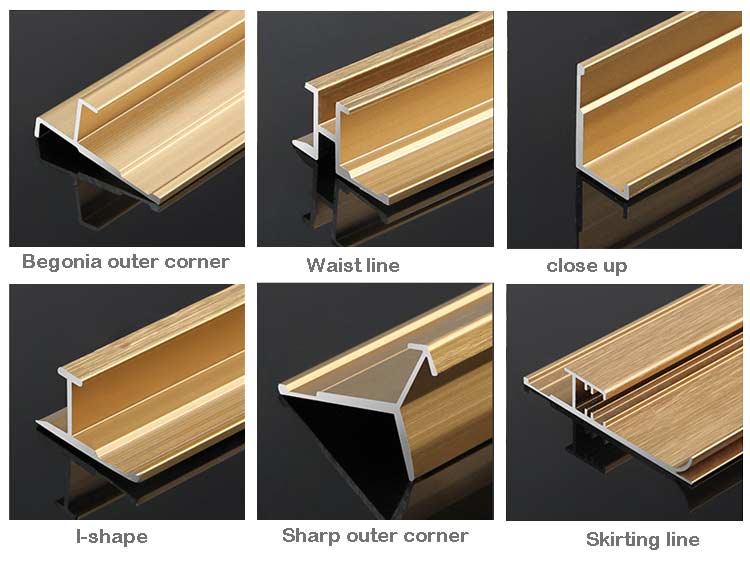Content Menu
● Introduction
● Understanding Aluminum Trim Profiles
● Benefits of Aluminum Trim Profiles
>> Durability and Longevity
>> Aesthetic Appeal
>> Ease of Installation
● Applications of Aluminum Trim Profiles
>> Residential Applications
>> Commercial Applications
● Choosing the Right Aluminum Trim Profile
>> Design Considerations
>> Functionality
>> Budget
● Conclusion
● Related Questions
>> 1. What are the main advantages of using aluminum trim profiles in construction?
>> 2. How do aluminum trim profiles compare to wood and plastic trims?
>> 3. Can aluminum trim profiles be customized?
>> 4. Are aluminum trim profiles suitable for outdoor use?
>> 5. What factors should be considered when selecting aluminum trim profiles?
Introduction
Aluminum trim profiles have become an essential component in modern construction, offering a blend of durability, aesthetic appeal, and versatility. As architects and builders seek materials that not only enhance the visual aspects of a structure but also provide long-lasting performance, aluminum extrusion trim stands out as a preferred choice. This article delves into the numerous benefits of using aluminum trim profiles in construction, exploring their applications, advantages, and the reasons behind their growing popularity in both residential and commercial projects.

Understanding Aluminum Trim Profiles
Aluminum trim profiles are extruded shapes made from aluminum, designed to serve various functions in construction. These profiles come in a wide range of designs, including angles, channels, and flat bars, allowing for creative applications in different architectural styles. The extrusion process involves forcing aluminum through a die to create specific shapes, resulting in a product that is lightweight yet strong.
Aluminum trim profiles can be finished in various ways, including anodizing, powder coating, and painting, which not only enhance their appearance but also improve their resistance to corrosion and wear. This versatility makes aluminum trim suitable for a variety of applications, from decorative elements to functional components in buildings.
Benefits of Aluminum Trim Profiles
Durability and Longevity
One of the most significant advantages of aluminum trim profiles is their durability. Aluminum is naturally resistant to corrosion, which means that it can withstand harsh weather conditions without deteriorating. Unlike wood, which can rot or warp over time, or plastic, which may become brittle, aluminum maintains its structural integrity for many years. This longevity translates to lower maintenance costs and fewer replacements, making it a cost-effective choice for builders and homeowners alike.
Moreover, aluminum trim profiles are not susceptible to pests such as termites, which can cause significant damage to wooden structures. This inherent resistance to biological threats further enhances the longevity of aluminum trim, making it a reliable option for both interior and exterior applications.
Aesthetic Appeal
Aluminum trim profiles offer a sleek and modern look that can enhance the overall aesthetic of a building. Available in various finishes, including brushed, polished, and powder-coated options, aluminum trim can complement any design style, from contemporary to traditional. The ability to customize colors and finishes allows architects and designers to create unique looks that align with their vision.
In addition to their visual appeal, aluminum trim profiles can be used to create clean lines and seamless transitions between different materials, such as walls, ceilings, and floors. This versatility in design makes aluminum trim an ideal choice for enhancing the architectural features of a space.
Ease of Installation
Another benefit of aluminum trim profiles is their ease of installation. Due to their lightweight nature, aluminum trims can be handled and installed with minimal effort compared to heavier materials. This characteristic not only speeds up the construction process but also reduces labor costs.
Aluminum trim profiles can be easily cut, shaped, and joined, allowing for quick adjustments on-site. This flexibility is particularly advantageous in projects where design changes may occur during the construction phase. Additionally, the compatibility of aluminum trim with various construction methods, including framing and drywall systems, further simplifies the installation process.

Applications of Aluminum Trim Profiles
Aluminum trim profiles are used in a wide range of applications across different sectors of construction. Their versatility allows them to be incorporated into various elements of a building, enhancing both functionality and aesthetics.
Residential Applications
In residential construction, aluminum trim profiles are commonly used for window frames, door trims, and baseboards. They provide a modern touch to homes while offering durability and low maintenance. For instance, aluminum window trims can enhance energy efficiency by providing a tight seal against the elements, reducing heating and cooling costs.
Additionally, aluminum trim can be used in outdoor living spaces, such as patios and decks, where it can withstand exposure to the elements without fading or deteriorating. The use of aluminum trim in these areas not only improves the visual appeal but also ensures longevity and performance.
Commercial Applications
In commercial buildings, aluminum trim profiles are often utilized in storefronts, signage, and interior finishes. The lightweight nature of aluminum makes it an ideal choice for large-scale applications, such as curtain walls and facades. These profiles can be designed to accommodate large glass panels, providing a modern and open feel to commercial spaces.
Moreover, aluminum trim is frequently used in office buildings, where it can be found in partitions, ceiling grids, and decorative elements. The ability to customize aluminum trim profiles allows businesses to create a professional and inviting atmosphere for clients and employees alike.
Choosing the Right Aluminum Trim Profile
When selecting aluminum trim profiles for a project, several factors should be considered to ensure the best fit for specific needs.
Design Considerations
The design of the aluminum trim profile should align with the overall aesthetic of the building. Architects and designers should consider the style, color, and finish of the trim to ensure it complements other materials used in the construction. Customization options allow for a tailored approach, enabling unique designs that stand out.
Functionality
The intended use of the aluminum trim profile is crucial in the selection process. For example, profiles used in high-traffic areas may require additional durability, while those used for decorative purposes may prioritize aesthetic appeal. Understanding the functional requirements will help in choosing the right profile for the job.
Budget
While aluminum trim profiles are generally cost-effective due to their longevity and low maintenance, it is essential to consider the budget for the project. Comparing different profiles and finishes can help identify options that meet both aesthetic and financial requirements.
Conclusion
Aluminum trim profiles offer a multitude of benefits that make them an excellent choice for construction projects. Their durability, aesthetic appeal, and ease of installation contribute to their growing popularity among architects, builders, and homeowners. Whether used in residential or commercial applications, aluminum trim enhances the overall design while providing long-lasting performance.
As the construction industry continues to evolve, the demand for materials that combine functionality with style will only increase. Aluminum trim profiles are well-positioned to meet this demand, making them a valuable addition to any building project.

Related Questions
1. What are the main advantages of using aluminum trim profiles in construction?
Aluminum trim profiles are durable, resistant to corrosion, lightweight, and available in various finishes, making them an ideal choice for both aesthetic and functional applications.
2. How do aluminum trim profiles compare to wood and plastic trims?
Aluminum trim profiles offer greater durability and resistance to weathering compared to wood and plastic, which can rot, warp, or become brittle over time.
3. Can aluminum trim profiles be customized?
Yes, aluminum trim profiles can be customized in terms of shape, size, color, and finish, allowing for unique designs that fit specific project requirements.
4. Are aluminum trim profiles suitable for outdoor use?
Absolutely! Aluminum trim profiles are highly resistant to the elements, making them an excellent choice for outdoor applications such as patios, decks, and exterior facades.
5. What factors should be considered when selecting aluminum trim profiles?
When choosing aluminum trim profiles, consider design aesthetics, functionality, and budget to ensure the best fit for your project needs.






















